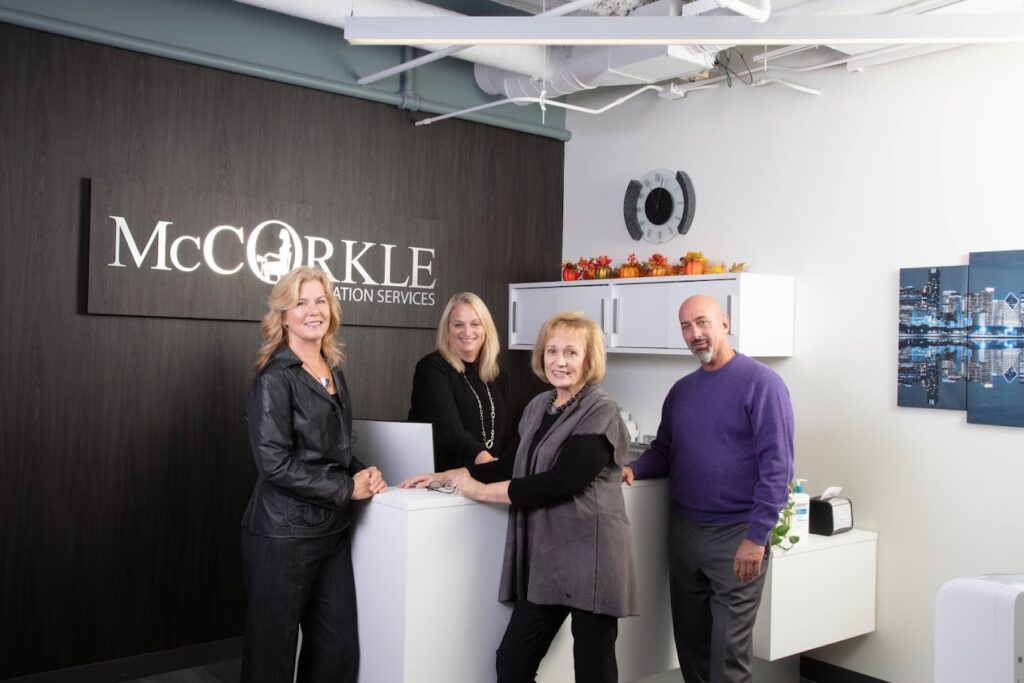What Is CART Reporting, and How Is It Different?
CART reporting, or Communication Access Real-Time Translation, is an essential service designed to provide immediate and accurate transcription of spoken language into text format. This service is invaluable for individuals who are hard of hearing or deaf, ensuring they have equal access to spoken communications in various settings such as classrooms, meetings, and public events. CART reporting utilizes specialized technologies operated by skilled professionals to deliver instantaneous captions on a screen, allowing users to read along in real time.
As the landscape of court reporting and real-time transcription evolves, understanding CART reporting becomes increasingly relevant, particularly for those engaged in legal proceedings. The rise of digital reporting technologies poses new challenges and opportunities, making it crucial to decipher the unique attributes of CART and how it diverges from traditional court reporting practices. The effectiveness of CART often hinges on human expertise, particularly in recognizing various accents, handling multiple speakers, and maintaining the nuances of live dialogue, which can be challenging for automated systems.
This article aims to demystify CART reporting, outlining its core principles, applications, and the key differences that set it apart from other forms of transcription services. Through this understanding, we can appreciate the critical role CART plays in enhancing accessibility and ensuring that everyone can participate fully in discussions and proceedings, particularly within the legal context.
Understanding CART Reporting
CART reporting functions through a combination of specialized captioning software and input from professional captioners who transcribe speech in real-time. The process typically involves a steno machine that captures spoken dialogue and translates it into text, which is then displayed on a computer or screen for the audience to read. This immediate translation allows participants to engage fully in discussions, whether in-person or remote, thus breaking down communication barriers that may exist for individuals with hearing impairments.
Some critical features of CART reporting include:
- Real-time transcription: CART provides instantaneous text output, allowing participants to read dialogue as it occurs.
- Accessibility: The service ensures that individuals with hearing disabilities have equitable access to spoken content, promoting inclusion in various settings.
- Specialized equipment: CART reporters utilize steno machines and advanced software, enabling them to capture speech with high accuracy even in challenging environments.
- Professional expertise: CART providers often have training in specific subject areas, enabling them to transcribe jargon or complex terminology effectively.
The Importance of CART Reporting
CART reporting is not just a service; it is a vital tool for empowerment and inclusion. The ability to access information in real-time can significantly enhance educational experiences for students with hearing impairments. In addition, in legal settings such as courtrooms, providing an accurate and immediate transcript is critical for fair proceedings, ensuring that all parties can understand and participate meaningfully in the legal process.
Here are several key reasons why CART reporting is essential:
- Enhances learning outcomes: In educational settings, accurate transcription helps students grasp complex concepts better when they can follow along with the spoken material.
- Promotes effective communication: CART facilitates better discussions in meetings and public forums by providing clear and immediate access to spoken content.
- Legal compliance: Under laws such as the Americans with Disabilities Act (ADA), organizations are often required to provide equal access to communication, making CART an invaluable asset.
- Encourages participation: For individuals who might otherwise feel excluded, being able to access content ensures their active participation and engagement.
How Is CART Reporting Different from Other Forms of Reporting?
While CART reporting shares similarities with traditional court reporting, it has distinct features that differentiate it from other transcription services. Understanding these differences helps illuminate the specific advantages that CART provides in various contexts.
One of the most notable distinctions is the intended purpose of the reporting. Traditional court reporting is primarily focused on creating a verbatim record of legal proceedings. This represents a permanent legal document that may be referenced in the future. On the other hand, CART is designed for immediate access, aiming to facilitate ongoing communication rather than generating documentation for archival purposes.
Additionally, CART reporting is characterized by:
- Interactive engagement: Participants can read along in real time and ask questions for clarification as discussions unfold, a feature that traditional court reporting generally lacks.
- Customization: CART can be tailored to meet specific needs, such as specialized terminology relevant to the event or audience, while traditional court reporters may adhere strictly to legal jargon conventions.
- Fluidity of format: CART can be delivered in various formats, including on-screen displays, printed transcripts, or even mobile app notifications, providing flexibility that may not be available in traditional records.
Applications of CART Reporting
CART reporting has a range of applications across different settings. Its versatility makes it an ideal choice not only in courtrooms but also in educational institutions, corporate environments, and public events. Understanding these applications can help organizations recognize the value of incorporating CART services into their accessibility plans.
Some common applications of CART reporting include:
- Education: In classrooms and lecture halls, CART services provide live captions for students, allowing them to fully engage with presentations and discussions.
- Courtrooms: During legal proceedings, CART ensures that all participants, including jurors and defendants, have access to real-time transcripts of what is being said.
- Corporate meetings: Inclusion in business environments promotes effective communication among team members, especially those who may have hearing impairments.
- Public events: Conferences, workshops, and talks benefit from CART by ensuring all attendees can follow along with speakers, regardless of their hearing abilities.
Frequently Asked Questions (FAQs)
Many people have questions about CART reporting, which highlights its significance in contemporary communication practices. Here are some common queries:
- What types of events can benefit from CART reporting?
CART can be utilized in various events, including educational settings, legal proceedings, corporate meetings, and public gatherings. - Is CART reporting only for the deaf and hard of hearing?
While CART primarily aids individuals with hearing impairments, it can benefit anyone who prefers reading over listening, including non-native speakers or those in noisy environments. - What technology is used for CART reporting?
CART reporters use steno machines along with specialized software to transcribe speech in real time while also offering various display options for the audience. - How do I hire a CART reporter?
CART services can be booked through specialized agencies or independent reporters; it is advisable to inquire about their credentials and expertise to ensure quality service.
Conclusion
CART reporting plays a pivotal role in fostering meaningful communication and ensuring equitable access for all individuals, particularly those with hearing impairments. Its real-time transcription capabilities allow for immediate engagement in discussions across various settings, from courtrooms to classrooms. As digital technologies continue to develop, the human touch inherent in CART reporting remains invaluable, bridging communication gaps and making interaction possible.
Understanding CART’s unique advantages and applications can empower organizations to adopt inclusive practices that honor the principles of accessibility and fairness. By recognizing and leveraging the value of CART reporting, institutions can ensure that every voice is heard and every participant can contribute meaningfully.
For further reading, consider these articles:

About McCorkle Litigation Services
McCorkle Litigation Services is a premier provider of comprehensive litigation support, specializing in delivering exceptional court reporting services to legal professionals. With decades of experience in the industry, McCorkle has built a reputation for reliability, accuracy, and professionalism. Their team of certified court reporters is adept at capturing every word of legal proceedings with precision, ensuring attorneys and clients have access to impeccable records. Whether it’s depositions, trials, arbitrations, or hearings, McCorkle’s expertise extends across a wide array of legal matters, making them a trusted partner in the litigation process.
The experienced court reporters at McCorkle Litigation Services are highly trained in the latest technologies, including real-time transcription and video deposition synchronization. This ensures that clients receive timely and efficient services tailored to meet the demands of modern legal practices. McCorkle’s commitment to accuracy and confidentiality is unwavering, offering peace of mind to legal teams who require reliable documentation of critical proceedings. Backed by a legacy of excellence and a dedication to client satisfaction, McCorkle Litigation Services continues to set the standard for court reporting and litigation support nationwide.







